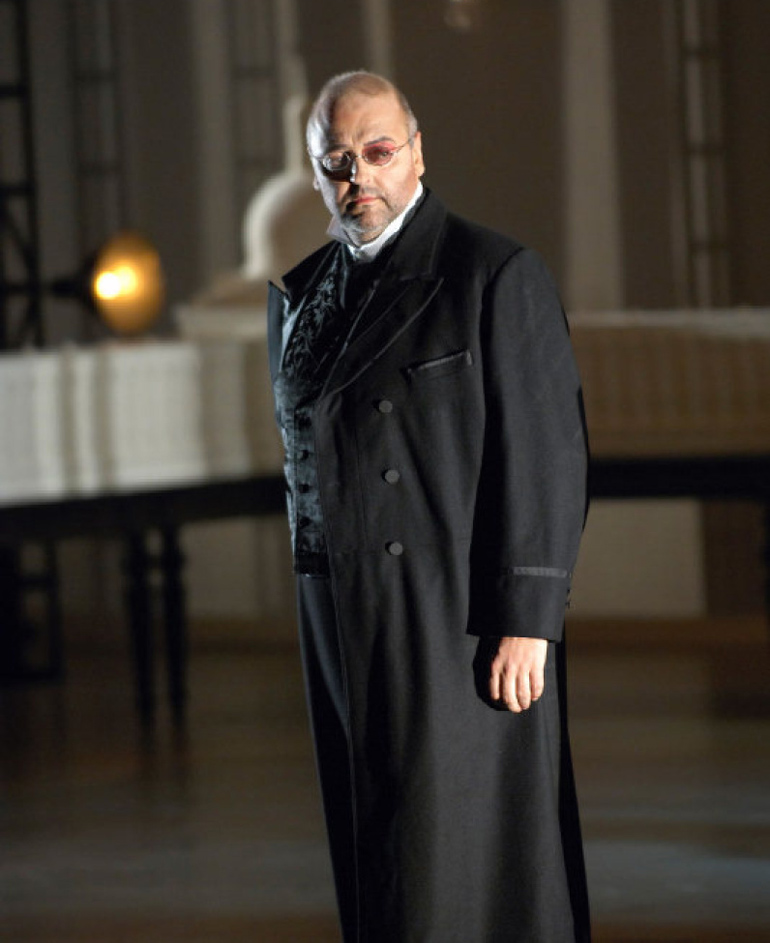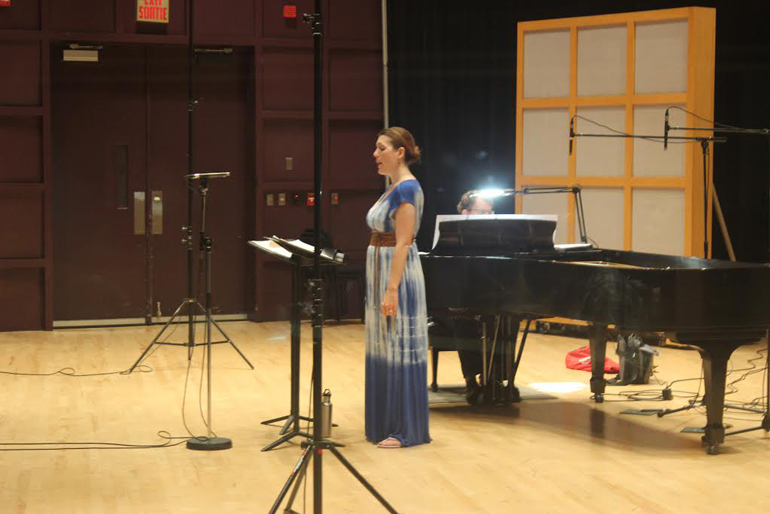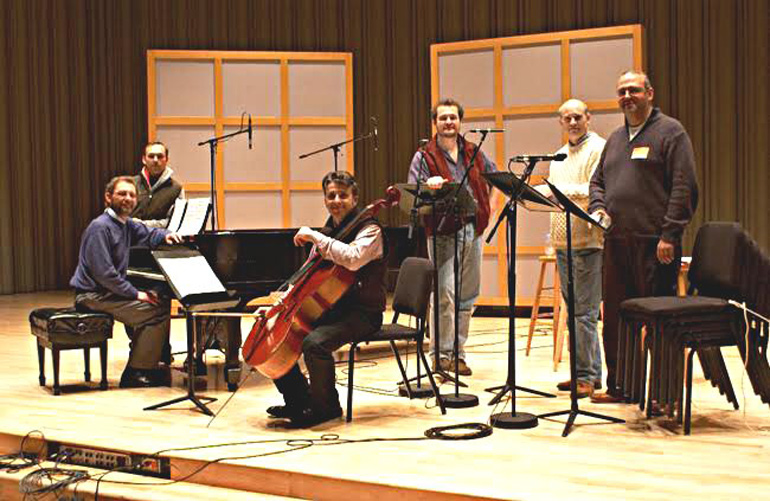
British-Ukrainian bass-baritone Pavlo Hunka shares his thoughts on bringing Ukrainian Art Songs to the world.
To Canadian opera lovers, particularly in the Toronto area, bass-baritone Pavlo Hunka is a familiar name. Hunka sang with distinction on the Canadian Opera Company stage for several seasons, as Falstaff, Hunding, Alberich, Wozzeck, Golaud, and Siskov (in Janacek’s From the House of the Dead.) Although he has not appeared with the COC in recent years, he continues his strong connection to Canada through his Ukrainian Art Song Project (UASP). Born in the UK to a Ukrainian father and a British mother, Hunka is passionate about bringing Ukrainian art songs, the bulk of which remain unheard and largely forgotten, to the consciousness of classical music lovers everywhere. He sees these songs as a vital part of the Ukrainian cultural heritage and rightly deserves to be heard. To that end, Hunka founded the UASP in 2004, with a mandate to discover, record, preserve and promote these songs to the world.
The project has thus far led to four CD collections featuring 302 art songs from seven composers – Kyrylo Stetsenko, Mykola Lysenko, Yakiv Stepovyi, Denys Sichynsky, Stanyslav Liudkevych, Vasyl Barvinsky and Stefania Turkewich. The most recent release was Galicians 1 last November of songs by the last four composers on the list made possible by funding from the Ukrainian-Canadian communities. The artists recruited to participate in the project are all Canadian. I’ve spoken to several, and they all believe in Hunka’s vision and are happy to be part of this groundbreaking endeavour.
These songs were composed in the 19th and 20th centuries, but only 5% had been performed, with the rest languishing in drawers or library shelves. Before the breakup of the Soviet Union, the Ukrainian language was not allowed as the official medium of communication, even in the arts. Since the start of the project, more songs have come to light, including 200 recently brought forward by a descendant of one of the composers. Given the scope of the undertaking, what was planned as a 15-year project has now been extended to 20 years. Through it all, Pavlo Hunka remains its steadfast and tireless champion. A former lawyer and a singer of international stature, Hunka, together with his wife Larysa, have the legal and business acumen, the musical knowledge and above all the single-minded determination to spearhead this massive project.
The plan going forward is to record an additional 620 songs from 16 Ukrainian composers. Hunka and his team are currently at the Glenn Gould Studio in Toronto to record Galicians 2. This new collection contains 78 songs by Nestor Nyzhankivsky, Ostap Nyzhankivsky, Jaroslav Lopatysky, and Myroslav Volynsky. Four more Canadian artists have signed on, including soprano Virginia Hatfield, mezzo Andrea Ludwig, pianist Kinza Tyrrell and violinist Marie Bérard. They join Hunka and baritone Russell Braun, tenor Benjamin Butterfield, mezzo Krisztina Szabo, soprano Monica Whicher and pianists Albert Krywolt and Carolyn Maule in Galicians 2.
I dropped by the Glenn Gould Studio on Tuesday to sit in on a recording session and to interview some of the artists. The taping on that particular afternoon involved mezzo Krisztina Szabo and baritone Russell Braun, together with pianists Carolyn Maule and Albert Krywolt. Despite the tight recording schedule, they took time out to have a brief chat with me on this project.

PH: Pavlo Hunka (bass-baritone); KS: Krisztina Szabo (mezzo-soprano); AK: Albert Krywolt (pianist)
JS: Pavlo, let’s start with you – when I last wrote a piece about you back in 2011, I called you at the time “a man on a mission.” It seems that the mission is still ongoing, and it’s still possible?
PH: Yes! It was planned as a 15-year project, but since we have 200 more songs than we had 10 years ago, it’s turning into a 20-year project! […] Only last Sunday, I was approached by the great, great nephew of Nestor Nyzhankivsky, one of the composers we’re currently recording. He brought me two boxes of songs!
JS: I’ve noticed that these songs have no opus numbers. Is it because they haven’t been studied by scholars and properly documented?
PH: The only time these songs were edited and published were in the 1960’s. At the time, the Soviet regime loosened the reign on the Ukraine a little bit, to give them the freedom to do it. And these were not top-rate editions; they were over-edited, but at least the songs were there.
JS: Galicians 1 was your most recent release. How was it received?
PH: It was a great show… I’ve got people still talking about our launch concert on November 2nd. We did miniature staging of six themes, and people loved it. They were drawn into the drama, (and the performances by) Krisztina, Albert, Russell and Monica. It was fully staged but in miniature. Eighty songs were launched, and we are now in the next stage, Galicians 2. That’s going to be about 160 songs. And Galicians 3 is about another 100 on top of that. We’ll do another launch after all the Galician songs are recorded, a total of 270 songs, all by composers from western Ukraine. After that, we go back to the composers in central and eastern Ukraine.
JS: The four composers in Galicians 1 were made up of a Late Romantic, a Post- Romantic, an Impressionist and a Modernist. What about Galicians 2?
PH: They are not immediately modern, very melodic, with Romantic influence. They are people who lived in the 20th century, up until 1960’s. Lopatysky was a very Romantic composer…he was a master of the melody.
JS: I’ve been meaning to ask you – are any of the songs orchestrated?
PH: Not that I know of, at least not the ones I’ve seen. I’ve got the collection at home, and I’ll have to look at the scores in detail.
JS: Since these are songs by composers who lived in the 20th century, are any of the songs 12-tone?
PH: No, none of them.
JS: Isn’t that a little unusual, given the time period they lived in?
PH: Outside of Stefania Turkewich who studied in Berlin with Arnold Schönberg and was influenced by 12-tone music, all the others studied in Ukraine and I don’t think they were much influenced by the Second Viennese school. They were continuing the trend of late 19th century music. Albert, how would you classify these four composers in Galicians 2?
AK: They tend to be post Romantic, although a few are becoming post-Straussian but they definitely have their own voice and not just copies and imitations of the others.
PH: The piano accompaniment is richer as we go further. The piano works of the earlier composers were simpler in format. There are a good number of dissonances that are part of the music. One of the composers, Myroslav Volynsky, is still alive – he lives in Lviv and is composing an oratorio as we speak. The music often has crunchy chords, so it’s not predictable music; it’s interesting music. It’s difficult for me to say where he belongs.
JS: Albert, can you comment on the challenges for the pianist in these songs?
AK: There are some adjustments I’ve made. It’s more pure music than being written specifically for the piano. The most important thing is that the vocal lines are attractive, some are rather angular, but it comes out of a very good singing tradition, and the music supports that.
PH: The piano is very prominent. Even at the beginning when we felt the piano was accompanying, we tried to bring the importance of the piano up to the voice – I think it’s easier. The last song we recorded, the piano writing is very intricate. This morning we also did a trio with Marie Bérard on the violin…the instrumental writing is quite sophisticated.

JS: Have all of these songs had their premieres?
PH: It’s about 5% that have been heard. It’s only now that Ukrainians are waking up to the fact that they have a treasure of Ukrainian art songs. If you go to the opera in Ukraine for example, you’ll be struggling to go to anything beyond Verdi, Puccini, Tchaikovsky and Rachmaninoff. (The repertoire) is all very predictable.
JS: It begs the question that, if only 5% of the songs were heard, why did these composers keep composing?
PH: Exactly! In the 1876 Ems Edict by the Russian tsar Alexander II in the spa town of Ems, Germany, it prevented the Ukrainian language (to be) performed on stage, and also for it to be published in books. If they wanted their music to be performed, it had to be translated into Russian or French. For some incredibly patriotic reasons, a ton of Ukrainian composers simply went underground and continued to compose. They probably said to themselves that even if my music won’t be heard, I’m still going to do it because it’s my life. The regime they were subjected to tried to liquidate them, and when the Soviet Union came along, the Soviets invested loads of money into Ukrainian folksongs and dance but no money into classical music. And the composers still carried on composing. They were marginalized but they came out of it. It’s amazing that the music still exists.
JS: I want to ask you Krisztina, as a singer, what are the vocal challenges of singing these songs?
KS: When I came into the project, Pavlo gave me all the weird ones that other people couldn’t figure out how to do (laughs). My voice fits between the cracks and not easily defined. The repertoire that fits me the best doesn’t fit neatly in a box. I enjoy it…I like figuring things out.
JS: What’s the typical vocal range of these songs? I guess they’re like your typical art song that don’t go very high or very low?
PH: It depends. Sometimes it can be quite challenging, but the majority of the songs are about ten tones.
AK: It’s really for a professional singer, an octave and a half maybe? Some of the songs have a certain type of voice in mind, like a lighter voice. Virginia Hatfield sang one that was light, with a high C at the end. In a way it’s a character piece.
PH: If you saw the original score we had – sometimes we can’t get the written score of the composer and only the edited ones – the vast majority of the 124 songs we’ve recorded are written for soprano or tenor. I thought I’m not going to have any to sing! (laughs) Thank heaven for Sibelius (music composition and notation software), we changed the keys on a lot of the songs.
JS: The other issue is language. Is it you and Roman Hurko? Krisztina, is it a very challenging language for you? You speak Hungarian, right?
KS: Yes I do speak Hungarian, and there are some sounds that we have in Hungarian so it’s not unfamiliar. Ukrainian is actually easier than Russian, with very specific and clean vowel sounds. It’s been easier than I thought, with Pavlo coaching us…
PH: She’s an exception – she doesn’t make mistakes…she sings perfectly!
AK: In this project, the actual research and explorations in rehearsal is very important. The singers really study the language, not just the pronunciation but from other points of view. It’s a tremendous amount of work.
PH: We’re building a library of all the songs. It’s a matter of months now that 302 songs will go on our website. All the scores will be there, in Sibelius format, which means you can change it to any key you like. And you can play the songs electronically. There’ll also be a translation for people who can’t read Cyrillic. With Sibelius, it’s a complete learning system. It is up and running now at www.ukrainianartsong.ca
JS: Do you have a personal favourite, Krisztina?
KS: Hmmm…It’s the trio. It’s so beautiful…
PH: Oh, the trio! That’s Barvinsky, called “Song of Songs” for violin, piano and mezzo. My favourite that Krisztina sang is the one called “Oriental Melody,” – for me it’s pure Indian, Persian, Turkish music, just beautiful.
JS: It does make you wonder where the composers get their inspirations, their influences…
PH: From all places – Ukraine for centuries had been the battleground for many nations, and they left behind their influences.
JS: Just to be precise, at this moment, how many songs are we talking about?
PH: We’ve got 974 songs, and we’ve recorded 325 of them.
JS: That’s really quite a staggering number. Tell me Pavlo, what drives you? I think I know the answer but tell us anyway…
PH: The beauty of the music. But I also feel this music deserves to be on the world stage. My colleagues ask me, “why haven’t I heard this music before?” I am in a position where I can do something, and I want to do it. I have immense support from the Ukrainian communities here in Toronto and beyond…they don’t stop helping. What do I want it for? Ukraine deserves to be recognized as a cultured nation, a sophisticated nation, not just a war zone as it is at the moment. It defines a nation and its people. Ukrainians don’t know how rich they are culturally. They are now starting to become aware of that cultural heritage.
#LUDWIGVAN
Want more updates on Toronto-centric classical music news and review before anyone else finds out? Get our exclusive newsletter here and follow us on Facebook for all the latest.
- SCRUTINY | Opera Atelier’s All Is Love Makes Triumphal Return - April 15, 2024
- SCRUTINY | From The Heart: Ema Nikolovska And Charles Richard-Hamelin Offer Unique Program At Koerner Hall - March 26, 2024
- SCRUTINY | The Glenn Gould School Spring Opera Presents A Superb Dialogues Des Carmélites - March 22, 2024



